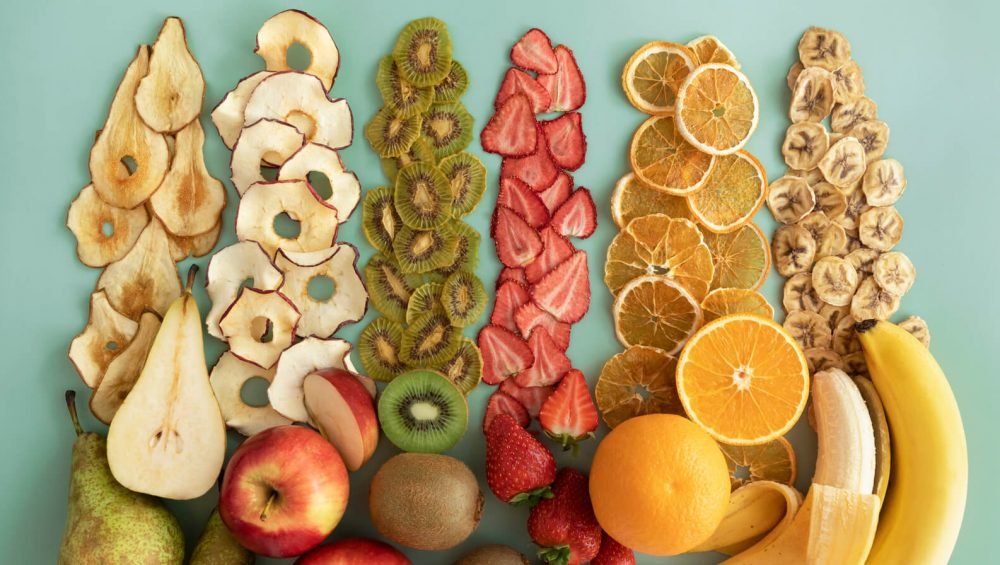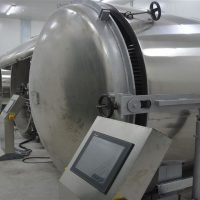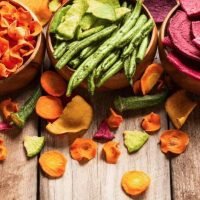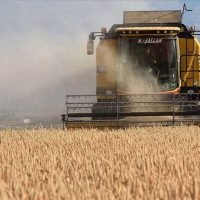Storing food by freezing, canning, or drying is a common form of consumption in home kitchens or professional kitchens. With food drying methods, also known as lyophilization, it becomes possible to make vegetables and fruits accessible anytime and use the products efficiently.
Different food drying methods are being tried to consume dried fruits and vegetables. You can use new technologies developed to dry by preserving color, taste, and texture much better than traditional sun drying management.
Storing by drying foods so they can be consumed out of season is a drying food preservation method that is thousands of years old. If the right food drying methods are applied, meat, vegetables, and fruits can be dried and stored healthily. Thus, products taken from nature with great effort are consumed more efficiently. This is a valuable practice in terms of sustainable production and provides easy access to foods out of season.
Today, however, technology offers much more effective solutions than sun drying. Because sun drying, the most traditional food drying methods, can cause fruits and vegetables that have been waiting for a long time to lose their nutritional value to a large extent.
What is Drying, and Where is It Used?
Water content in fruits and vegetables, usually between 80% and 95%, hinders long shelf life. Dehydrating food through various drying methods reduces this moisture content to 10%–20%, enhancing shelf stability. In applying food drying methods, care must be taken to preserve the food’s color, flavor, and aroma.
Examples of drying methods of food preservation include traditional air drying and advanced techniques like lyophilization. Post-dehydration, rehydrated foods should retain their ability to hold water, maintaining their original texture and taste when cooked again. Utilizing these food drying methods is crucial to extending the shelf life of various food products without compromising their quality.
Food Drying Methods Suitable for All Purposes
Food drying methods should be fit for a purpose. That is to dry the food to extend the shelf life of the food naturally while preserving the nutritional values, color, taste, and odor as much as possible. Two methods stand out for this aim. One of the food drying methods is with sulphurization, and the other is using a lyophilizer. Let’s examine both options.
Lyophilizer
Freeze-drying is the most preferred method to practically dry foods by preserving their nutritional value and preventing color and taste loss. The lyophilizer method is defined as freeze drying, also called cryodesiccation. In this method, fruits or vegetables are first frozen very quickly. These crystals are then removed by sublimation. Here, a process based on freezing and extracting the juice contained in the fruit and vegetable is performed.
Among the food drying methods, the lyophilizer option stands out for different reasons. The main reasons for this are listed as follows:
- It is the method by which the nutritional values of fresh foods are best preserved.
- In freeze-drying foods their shelf life is longer than in other methods.
- It can be used for vegetables, fruits, fish, meat, ice cream, eggs, and dairy products.
- Freeze-drying foods increasingly used in homes and professional kitchens save much money. It also makes an important contribution to sustainability.
Sun Drying
The most traditional method of drying food is to lay it in the sun. This method is still used for household fruit and vegetable drying. Here, fruits or vegetables are washed and sliced, laid on a cloth or paper, and exposed to the sun. This drying method, especially in August, is applied in almost every region of our country.
Baking
It is a drying process mostly used for green leaves. For example, medicinal plants such as mint, thyme, St. John’s wort, linden, sage, and eucalyptus can be dried this way. The plants, which have been washed and filtered in giant ovens, are dried in a way to give instant heat. It is then ground into powder and packaged appropriately.
Sulfurization Method
The element SO2, namely sulfur dioxide, plays an important role in the sulphurization process. Because sulfur dioxide is given to the fruits and vegetables desired to be dried. The most important feature of sulfur dioxide is that it allows fruits and vegetables to dry much faster than laying them directly in the sun. This minimizes color and taste loss. It also eliminates the presence of insect larvae and bacteria.
Sulfurization can be done in two different ways. One of them is to burn the powdered sulfur in special rooms and release SO2. Fruits and vegetables to be dried come into contact with SO2 gas. The second method is to spray sodium bisulfite on fruits and vegetables, which is adjusted according to a certain formula.
What to Use for Home Freeze Drying?
In most houses, products such as peppers, eggplants, tomatoes, and apricots are dried in the sun and stored for the winter, following the ancestral traditional methods. However, these conventional methods cannot preserve their nutritional value and do not protect insect larvae and bacteria. As a result, the life of sun-dried fruits and vegetables needs to be longer.
Freeze dryer technology, one of the food drying methods suitable for home use, offers great comfort. It enables you to dry the products you buy in the season practically and safely with a device where you can complete all the processes. So, what is freeze-dryer technology, and how does it work?
Freeze Dryer Technology
We’ve discussed various food drying methods of food preservation, with a spotlight on drying food, illustrating how freeze-drying emerges as the most efficient approach. But is utilizing freeze-drying technology for preserving your food at home feasible? Indeed, it’s plausible with advanced freeze-dryer technology!
In this process, foods are frozen using reduced temperatures and pressure, enabling the water to be extracted in its gaseous form, skipping the liquid state. This technique, known as sublimation, facilitates the rapid removal of water— the primary culprit in food spoilage—while retaining the food’s color, aroma, and flavor. Contrary to traditional food drying methods like sun drying or sulfur drying, it’s versatile enough to be applied to various food items, including vegetables, fruits, and more.
You can browse and order freeze dryers, which have fast and practical installation, from our site. You can dry different foods such as fruit, vegetables, meat, fish, baby food, and ice cream by removing the water and keeping them fresh for years.
You can reach our previous article from https://liyolife.com/en/freeze-dry-machine-maintenance-and-repair/







